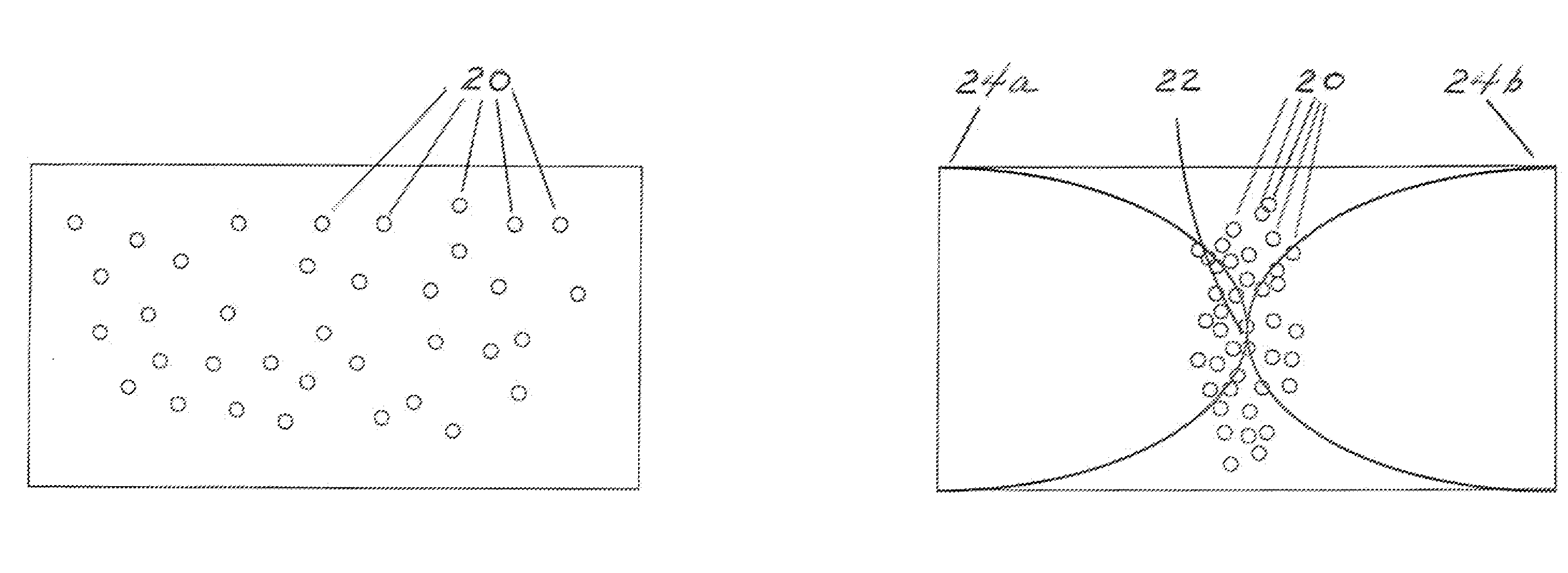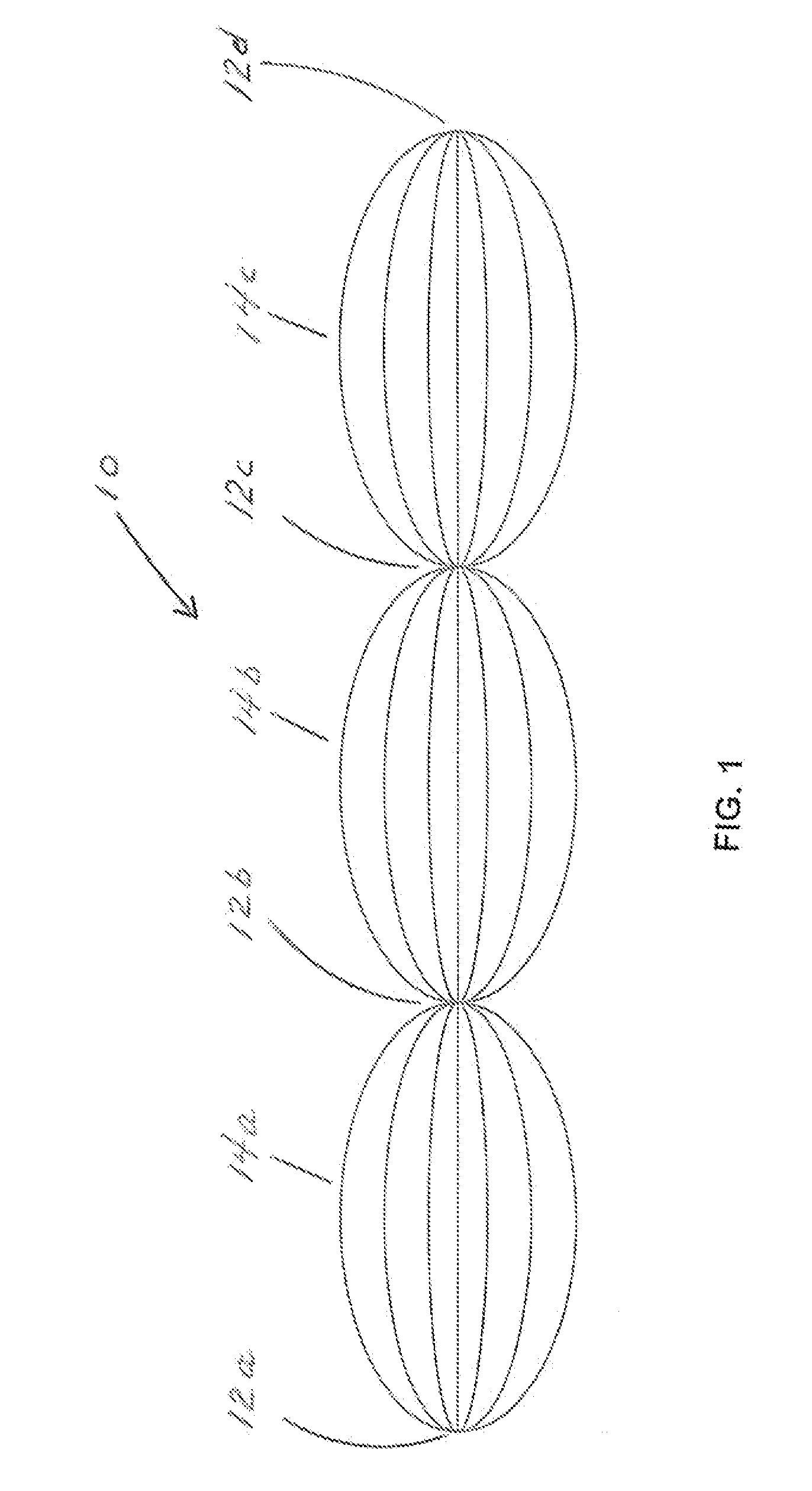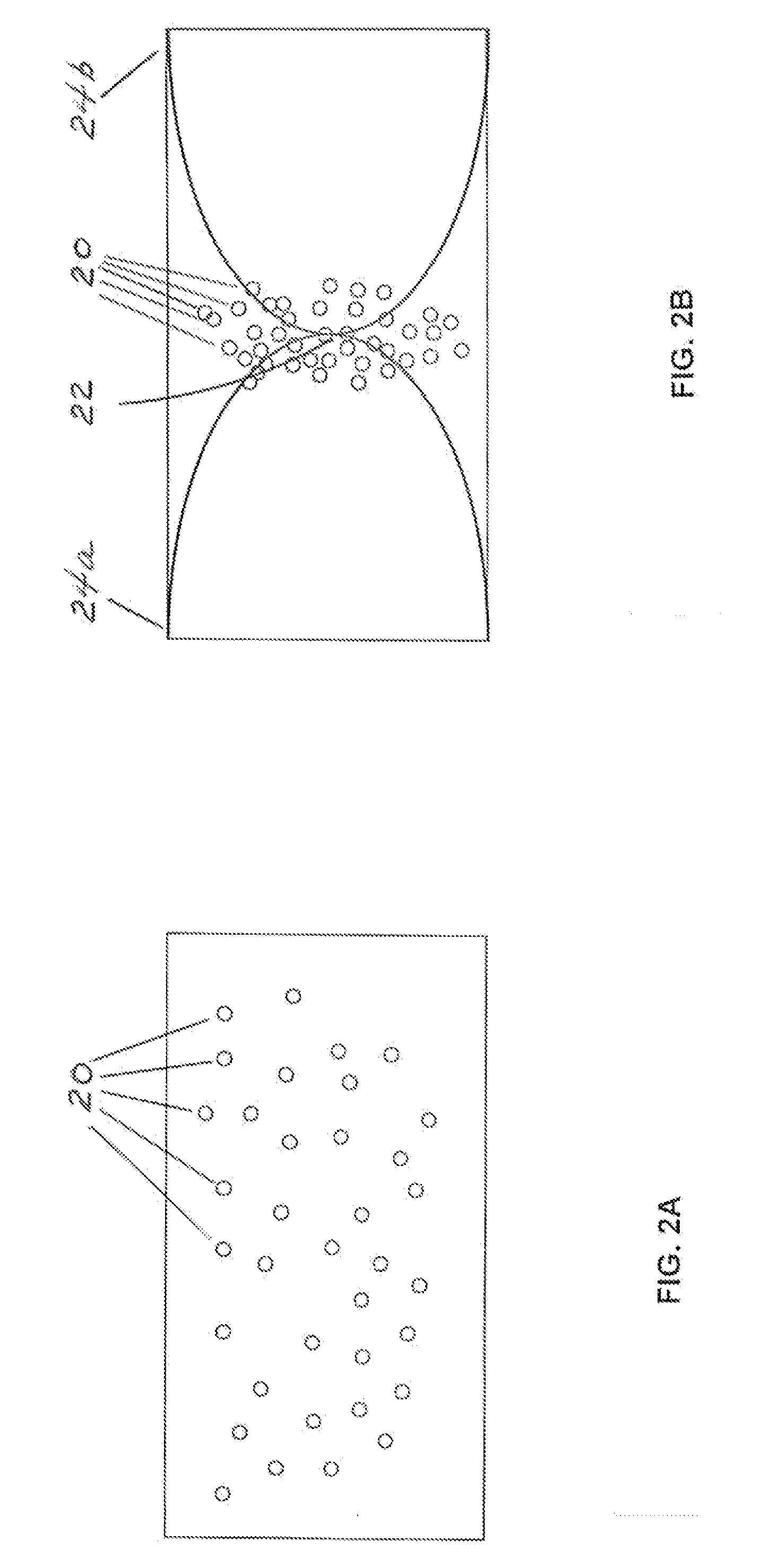Apparatus and method for separation of particles suspended in a liquid from the liquid in which they are suspended
a technology of particle suspension and apparatus, which is applied in the field of separation of particles from liquids in which, can solve the problems of consuming time, requiring extensive labor and a relatively large amount of time for medical laboratories, and limited resources with respect to both equipment and personnel, so as to facilitate the collection of blood cells, facilitate the concentration of blood cells and platelets, and avoid turbulence.
- Summary
- Abstract
- Description
- Claims
- Application Information
AI Technical Summary
Benefits of technology
Problems solved by technology
Method used
Image
Examples
Embodiment Construction
[0050]As used herein, the expression “acoustic energy” refers to focused continuous and pulse acoustic energy with frequency typically higher that 20 KHz and less than 100 MHz. The wavelength corresponding to 20 KHz is about 7 cm and 100 MHz is about 14.5 micrometers in aqueous medium.
[0051]As used herein, the expressions “standing wave”, “stationary wave”, and the like mean a non-propagating wave that is generated by the interference of two waves moving in opposite directions. The frequencies of two waves must be the same to produce standing waves. Standing waves have nodes and anti-nodes. At nodes, the displacement is zero, and at antinodes the displacement is maximum. See, for example, the discussion of standing wave at the web site http: / / en.wikipedia.org / wiki / Standing_wave.
[0052]As used herein, the term “node” means the places where the medium does not move. As used herein, the term “anti-node” means the places where the medium experiences maximal vibration. FIG. 1 shows an aco...
PUM
| Property | Measurement | Unit |
|---|---|---|
| incident angle | aaaaa | aaaaa |
| length | aaaaa | aaaaa |
| length | aaaaa | aaaaa |
Abstract
Description
Claims
Application Information
 Login to View More
Login to View More - R&D
- Intellectual Property
- Life Sciences
- Materials
- Tech Scout
- Unparalleled Data Quality
- Higher Quality Content
- 60% Fewer Hallucinations
Browse by: Latest US Patents, China's latest patents, Technical Efficacy Thesaurus, Application Domain, Technology Topic, Popular Technical Reports.
© 2025 PatSnap. All rights reserved.Legal|Privacy policy|Modern Slavery Act Transparency Statement|Sitemap|About US| Contact US: help@patsnap.com



